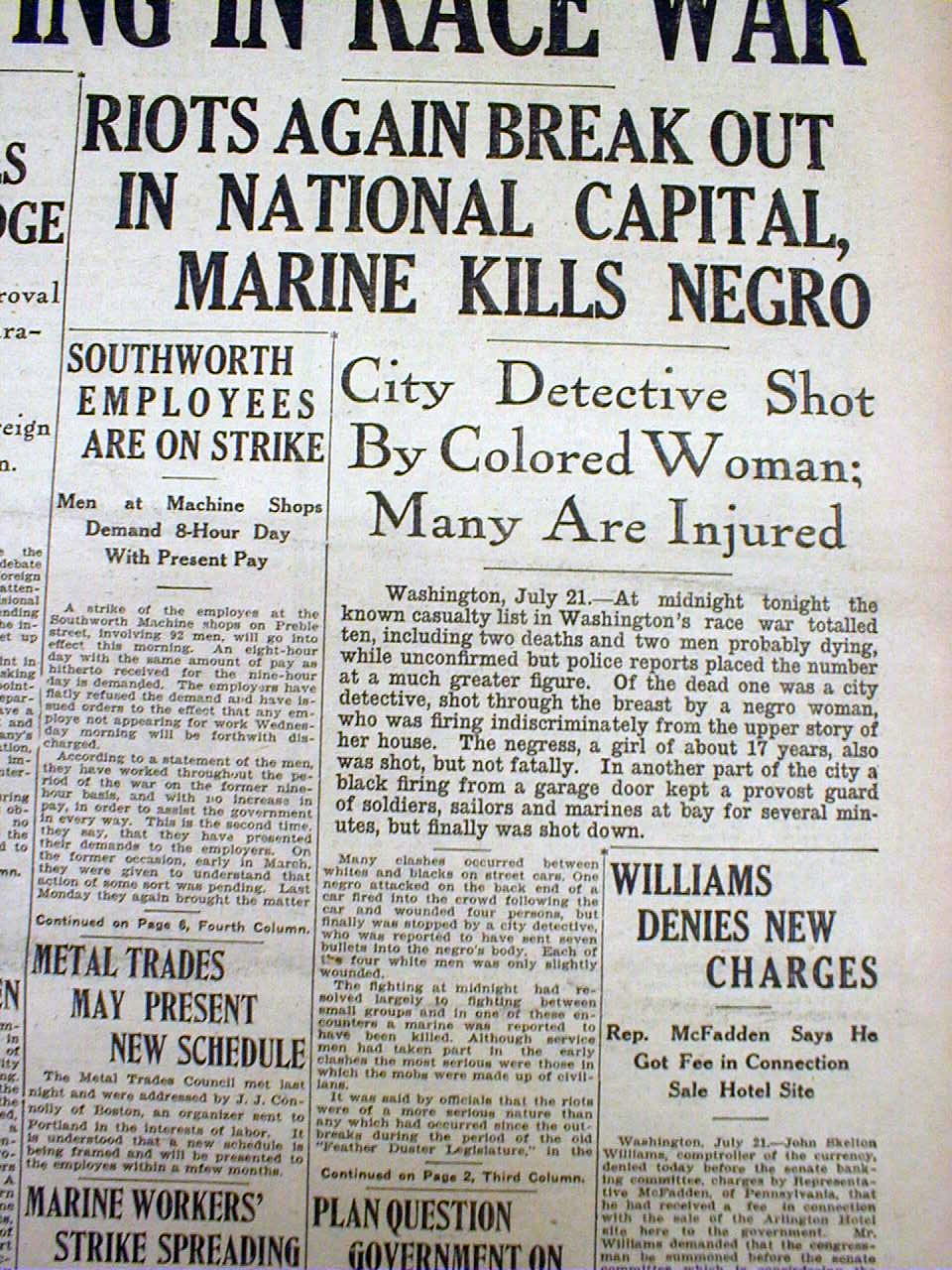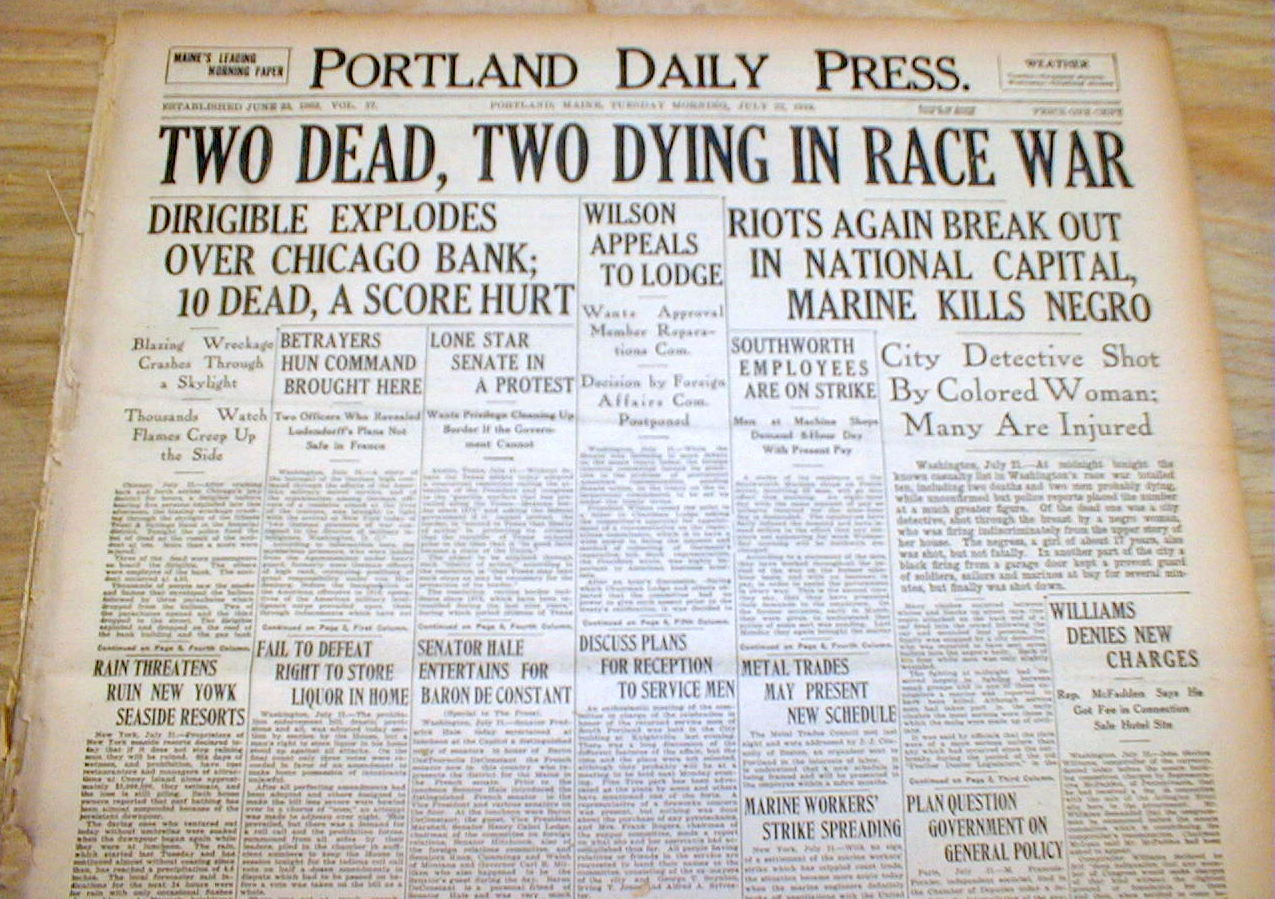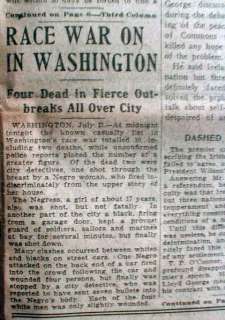cole phelps
Superstar

The Red Summer refers to the race riots that occurred in more than three dozen cities in the United States during the summer and early autumn of 1919. In most instances, whites attacked African Americans. In some cases many blacks fought back, notably in Chicago, where, along with Washington, D.C. and Elaine, Arkansas, the greatest number of fatalities occurred.[1] The riots followed postwar social tensions related to the demobilization of veterans of World War I, both black and white, and competition for jobs among ethnic whites and blacks. The riots were extensively documented in the press, which along with the federal government conflated black movements to bolshevism. "Armed resistance" movements started as a response to the riots. Dr. George Edmund Haynes wrote a report stating that lynching was a major problem within the United States.
The activist and author James Weldon Johnson coined the term "Red Summer." Employed since 1916 by the National Association for the Advancement of Colored People (NAACP) as a field secretary, he built and revived local chapters of that organization. In 1919, he organized peaceful protests against the racial violence of that summer.[2][3]
With the manpower mobilization of World War I and immigration from Europe cut off, the industrial cities of the North and Midwest experienced severe labor shortages. Northern manufacturers recruited throughout the South and an exodus ensued.[4] By 1919, an estimated 500,000 African Americans had emigrated from the South to the industrial cities of the North and Midwest in the first wave of the Great Migration, which continued until 1940.[1] They were also migrating to escape the lynchings, Jim Crow laws, lack of protected franchise and poor economy of the rural South, where the boll weevil was devastating cotton crops. African-American workers filled new positions in expanding industries, such as the railroads, as well as many jobs formerly held by whites. In some cities, they were hired as strikebreakers, especially during the strikes of 1917.[4] This increased resentment among many working class whites, immigrants or first-generation Americans. Following the war, rapid demobilization of the military without a plan for absorbing veterans into the job market, and the removal of price controls, led to unemployment and inflation that increased competition for jobs.
During the Red Scare of 1919-20, following the Russian Revolution, anti-Bolshevik sentiment in the United States quickly replaced the anti-German sentiment of the war years. Many politicians and government officials, together with much of the press and the public, feared an imminent attempt to overthrow the US government to create a new regime modeled on that of the Soviets. Authorities viewed African Americans' advocacy of racial equality, labor rights, or the rights of victims of mobs to defend themselves with alarm. In a private conversation in March 1919, President Wilson said that "the American Negro returning from abroad would be our greatest medium in conveying bolshevism to America."[5] Other whites expressed a wide range of opinions, some anticipating unsettled times and others seeing no signs of tension.[6]
Early in 1919, Dr. George E. Haynes, an educator employed as director of Negro Economics for the U.S. Department of Labor, wrote: "The return of the Negro soldier to civil life is one of the most delicate and difficult questions confronting the Nation, north and south."[7] One black veteran wrote a letter to the editor of the Chicago Daily News saying the returning black veterans
"are now new men and world men, if you please; and their possibilities for direction, guidance, honest use and power are limitless, only they must be instructed and led. They have awakened, but they have not yet the complete conception of what they have awakened to."[8]
W. E. B. Du Bois, an official of the NAACP and editor of its monthly magazine, saw an opportunity: "By the God of Heaven, we are cowards and jackasses if now that the war is over, we do not marshal every ounce of our brain and brawn to fight a sterner, longer, more unbending battle against the forces of hell in our own land."[9] In May, following the first serious racial incidents, he published his essay "Returning Soldiers":[10]
"We return from the slavery of uniform which the world's madness demanded us to don to the freedom of civil garb. We stand again to look America squarely in the face and call a spade a spade. We sing: This country of ours, despite all its better souls have done and dreamed, is yet a shameful land....
We return.
We return from fighting.
We return fighting."
We return.
We return from fighting.
We return fighting."














